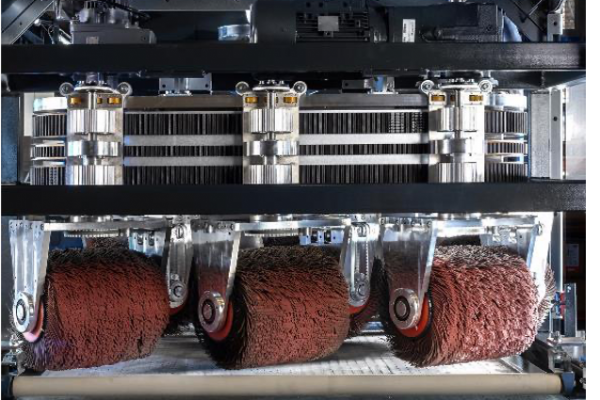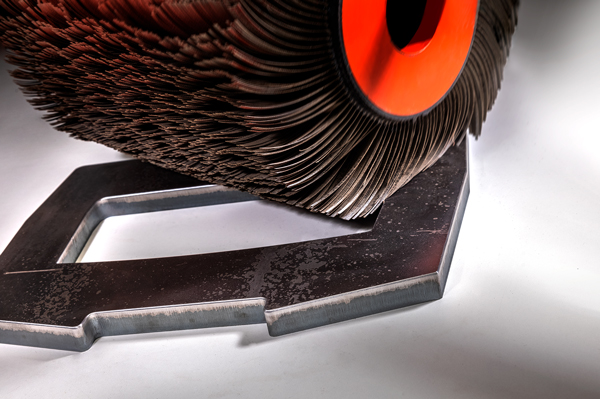
Heesemann sanding machines can be used in a wide range of applications. Our task is to make your workpiece requirements, creative ideas and design wishes possible with our technology. In mechanical engineering, we have a wide variety of units at our disposal, which we can combine individually for each customer and adapted to your requirements:.
The DB-S is used to brush and easily structure the surface of the workpieces. 5 heads, each with 2 disc brushes, rotate slightly across the workpiece surface at high speed, thus eliminating annoying sanding marks.
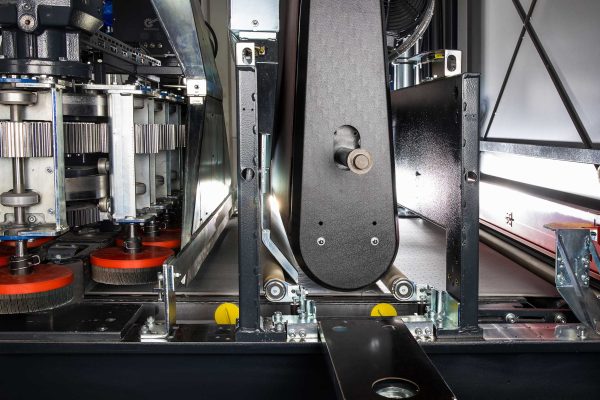
The RUT plate brush unit consists of 18 plate brushes, which are arranged in such a way that contours can be sanded out of previously unattainable quality. All areas are sanded evenly in different directions.
However, the finish is produced at significantly higher feed rates than is the case with deburring. While the feed rate during deburring is usually between 1.5 — 3 m/min, surface sanding takes place at 8 m/min and more.
As a result, the sheets that require a finish (often only a few% of total production) are passed through the machine a second time.
If the customer does not want to set up or sand in the same run, an additional broadband unit with contact roller is integrated into the machine as the last or penultimate unit.
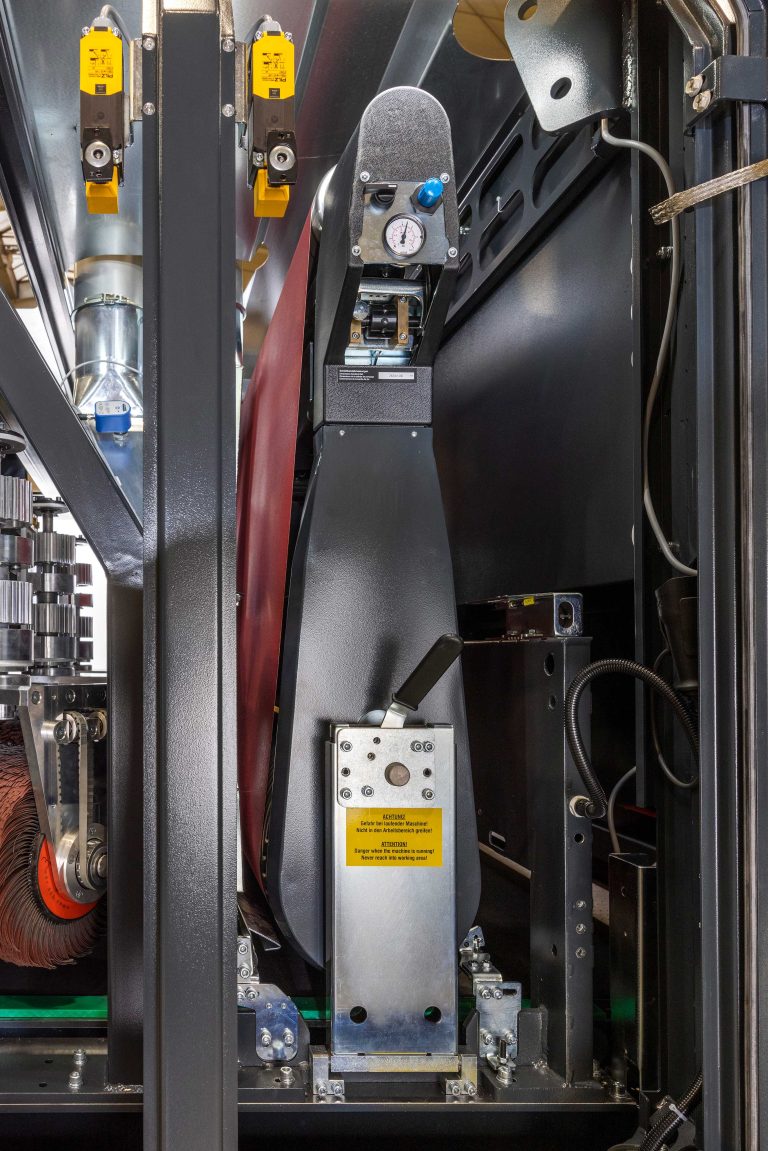
The RUL unit consists of 6 orbiting satellites, each of which carries a sanding flake roller 370 mm wide and 350 mm diameter.
The frequency control of the drives makes it possible to continuously adjust the rotational speed of the plate brushes and their rotational speed across the feed direction.
The disc brushes can be equipped with two different abrasives at the same time and thus sand with different grits in both directions and backward.
The unit can be converted, for example, from plate brushes with sanding equipment to structuring brushes in just a few simple steps with the help of the quick-change device.
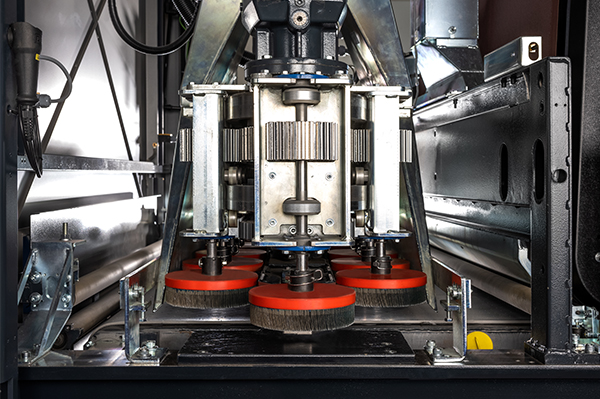
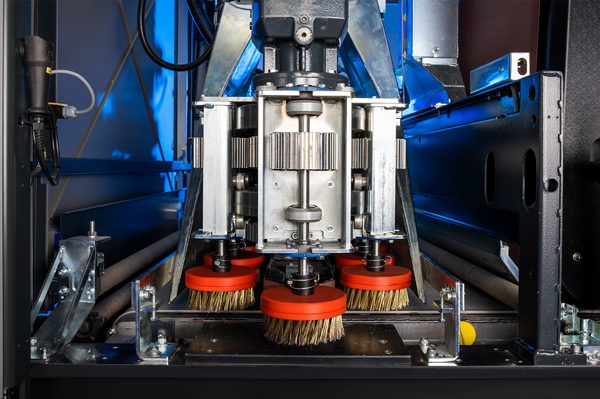
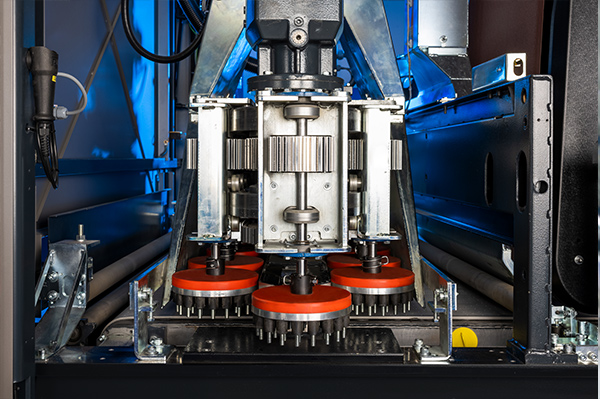
The RUL unit consists of 6 orbiting satellites, each of which carries a sanding flake roller 370 mm wide and 350 mm in diameter. As the satellites rotate around both their vertical and horizontal axes, workpieces are processed equally intensively from all directions, which does not achieve any other brushing process on the market. Thanks to the unique kinematics, it is possible to use pressure rollers to fix the workpieces on the conveyor belt in addition to vacuum. This is a unique advantage, especially for long, narrow parts and warped workpieces.
